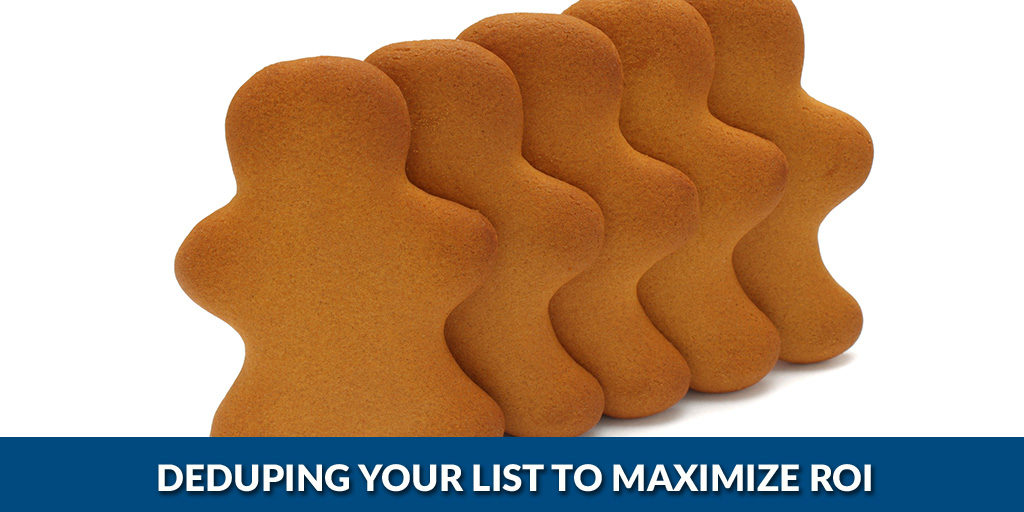
If you’re new to the merge purge world, the process of “deduping” may seem a bit mysterious. But once you understand a few basic principles, you can dedupe your lists with confidence.
The first thing to know is that when you’re trying to determine whether two records are duplicates, you can choose between three sets of matching criteria:
- Individual: The first name, last name and address are the same in both records
- Household: The last name and address match
- Resident: The two records have the same address
Secondly, because misspellings and name variations are common, you need to specify how stringent your matching criteria should be. Fortunately, matching software does a good job taking common nicknames into account, and will mark “Bob” as equivalent to “Robert”. But after nicknames are taken into account, imagine giving each set of two records a score between 0 and 100 based on how similar the two entries are. If every character in the two records is identical, it would score a 100; if no character is the same, it gets a 0. You can then choose which of the following levels of matching you want to use based upon the two records’ matching score:
- Exact: 100
- Tight: 90 – 99
- Medium: 75 – 89
- Loose: 60 – 74
So let’s assume you are preparing to send an acquisition mailing to 100,000 prospects whose names you’ve rented because they’ve donated in the last year to at least one organization similar to yours.
The first thing you want to do is to cull out any duplicates so you don’t send more than one mailing to anyone on the list. If you want to limit mailings to one per family, you might choose to do so using a residential match with medium-tight match criteria.
Because these “multi-buyers” have given to more than one organization in your industry, they are likely to be among the best prospects on the list. And, depending upon your list rental agreements, you probably have the right to mail them a second time, so make sure to flag them accordingly.
In addition to checking for duplicates within the list, you will undoubtedly want to check this list against your house list. For example, if you are sending a solicitation designed to encourage low-dollar, first-time donations, you probably want to make sure that major donors who’ve given $5,000 or more to your organization not be sent the mailing. In fact, you probably don’t want anyone in their household to receive the mailing. Therefore, you should match the acquisition list against your Major Donor list using loose match criteria on a household or resident level.
Finally, you probably also want to remove any previous donors to your organization from the list. However, if a donor who gave $50 to the organization last month were to receive another solicitation, it wouldn’t be a big deal. Therefore, you may choose to match your recent, low-dollar donor file to the acquisition list using tight, individual match criteria.
Obviously, this is only the tip of the iceberg of how you can use merge purge to maximize the return on investment of your mailings. If you’d like to learn more, please download our free eBook, Optimizing Your Merge Purge Operations.
Want more than a cookie cutter approach? MMI Direct dives deep into your data
to determine how best to optimize your list and maximize your direct mail ROI.




